Find out how Stafiz can help you manage your resource planning
Make an appointment to see a demo
SUMMARY

Step 1
These different goals often go hand in hand with each other. But they can have a different degree of importance depending on your business strategy. It is up to you to determine the objectives that the resource planning must be preferred.
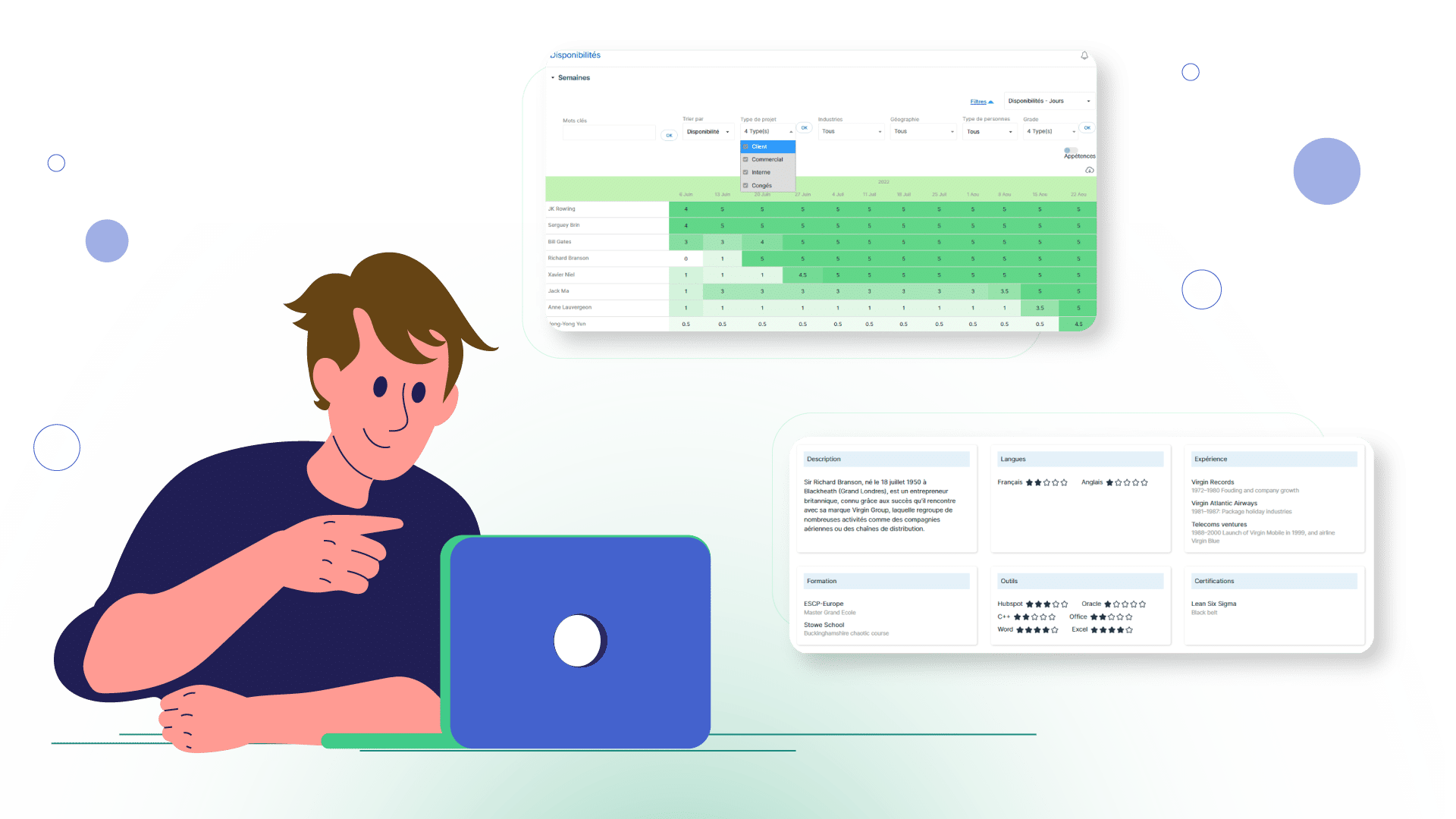
Step 2
If your resource planning is primarily intended to optimize employee workload, the resource planning will only need to track internal employees. But if you want to position external profiles to meet customer needs, and if you also regularly work with freelancers and subcontractors; the database you are considering to work on your resource planning must be broader.
The 3 types of profiles to take into account are as follows:
This internal database of profiles is essential to achieve your resource planning. All profiles must be taken into account and it must be possible to update the profiles with skills and preferences (clarified in the next section).
Knowing how to respond to all customer demands thanks to a database of profiles that will identify skills above and beyond those of internal employees can create a real competitive advantage for a service company. The chances of meeting customer requirements with the right level of skills must be maximized.
That is why it is necessary to also include the profiles of subcontractors you have already worked with, and of candidates (profile you have identified and registered) so that you can contact them if necessary.
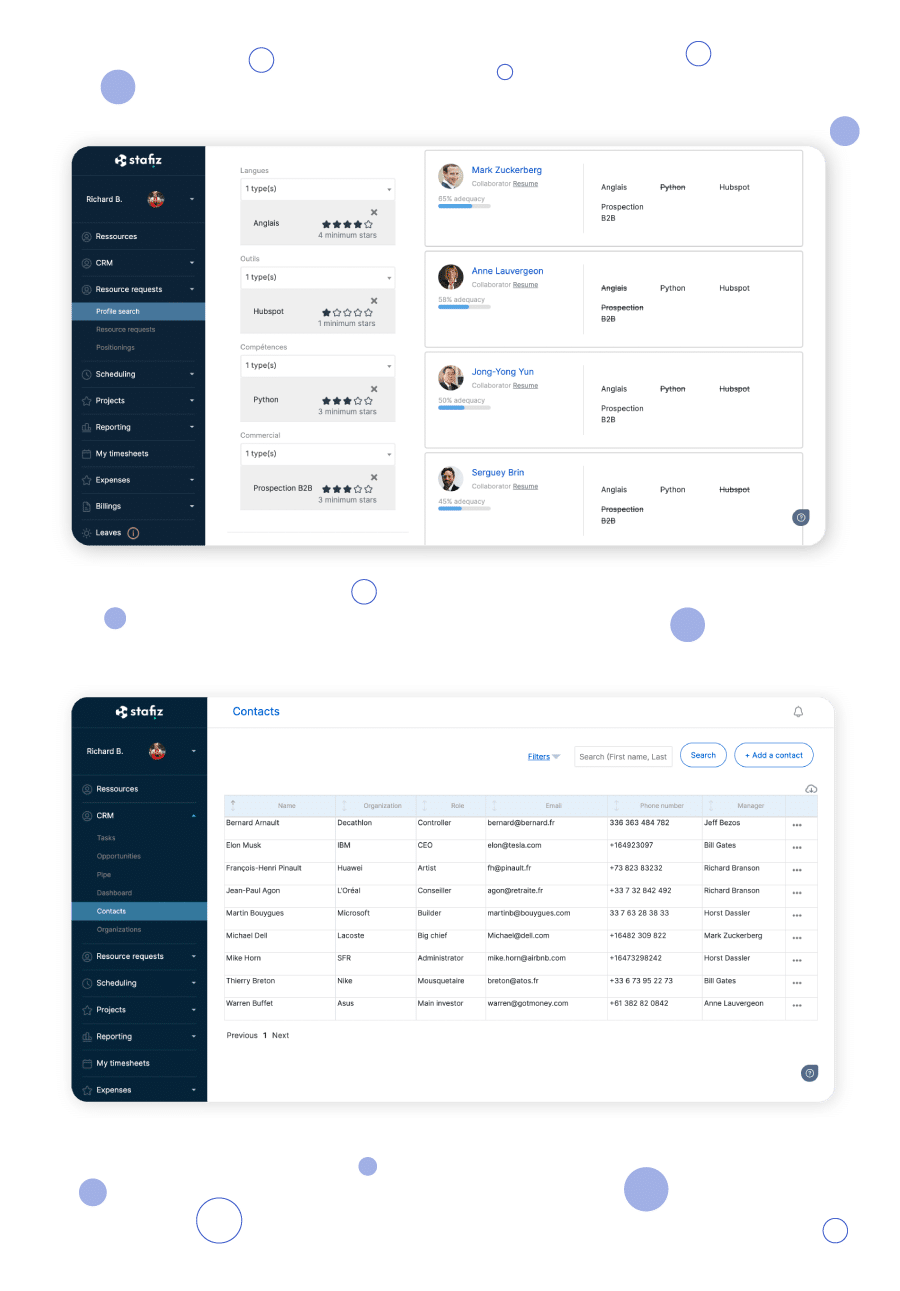
Make an appointment to see a demo
Step 3
The list of skills that can be attributed to the different profiles must be clarified. To do this, sales teams and management must be coordinated. They know the expectations of the customers perfectly. Human resources teams may already be monitoring these aspects of skills. Alignment within your company with regard to the competency framework to be followed is necessary, because there is an issue of offer to the customer and career monitoring from an HR point of view.
The skills must then be added to each profile with an indication of the mastery of each of them. The skill level is an interesting addition to facilitate the choice when several profiles have the same skill requested by a client. It is important that this update is done massively if it is to be done by the same person. Otherwise, each employee must be given the opportunity to update his or her own skills, before the manager checks them.
As the employee completes projects, he or she accumulates new skills or develops existing ones. You have to be able to give yourself the possibility of updating after each project in order to keep a skills base up to date.
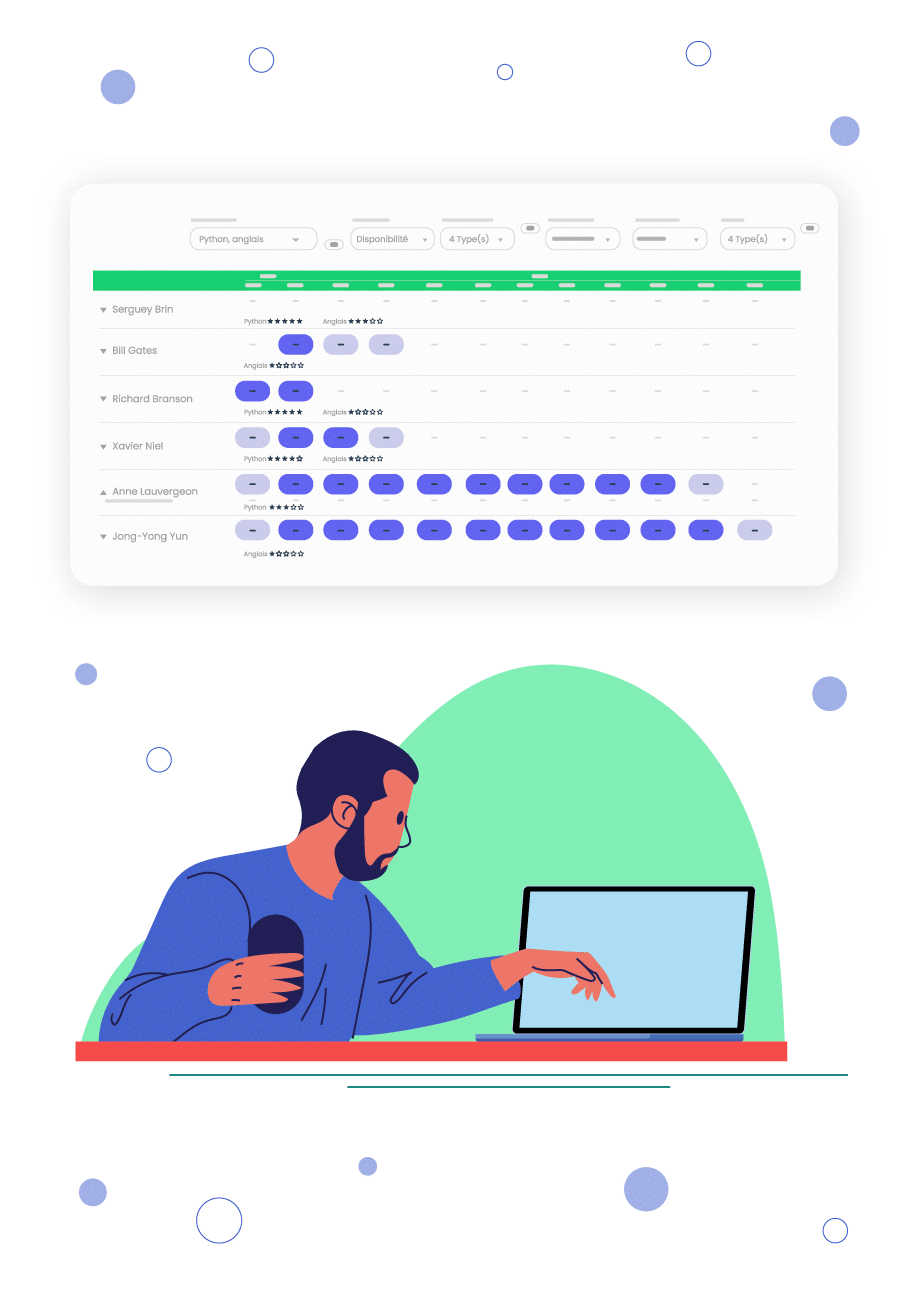
Step 4
Choosing profiles according to customer criteria is imperative. Integrating employee preferences into the selection criteria is also a real advantage for employees. It is an approach that promotes the career progression of teams and the development of the skills of profiles. This is the type of process that promotes employee satisfaction and retention.
In order to remain pragmatic, it is necessary to define what types of preferences can be updated by employees. They must be able to be used in the choice of resource planning, otherwise this approach will end up creating more frustration on the part of employees than satisfaction. Also, it is important that these preferences correspond to the criteria used in the resource planning so that a "matching" can be made.
Ideally, communication to launch a campaign over a limited period of time ensures that all employees update their preferences. You need to make sure that you have easy tracking to know who hasn't updated their preferences in order to revive them.

Step 5
You have to confirm the expected time to spend in the future on each of the client projects. Project managers are the people who will have the best visibility to indicate what remains to be done by each employee, and over what period of time this workload should be planned.
It is also necessary to take into account the burden related to internal projects. This ranges from time spent on management to the various internal projects on which employees contribute. Planning is often planned in terms of the number of hours or portions of the day over a period. For example, half a day a week devoted to management.
This update allows the associated load to be taken into account and thus reduce the capacity of employees to avoid overloading them.
Finally, it is necessary to position all the planned absences, and when employees are part-time, to indicate the dates on which they cannot work. If, for example, an employee works four-fifths and is absent every Friday, it is essential that his or her capacity reflects this.
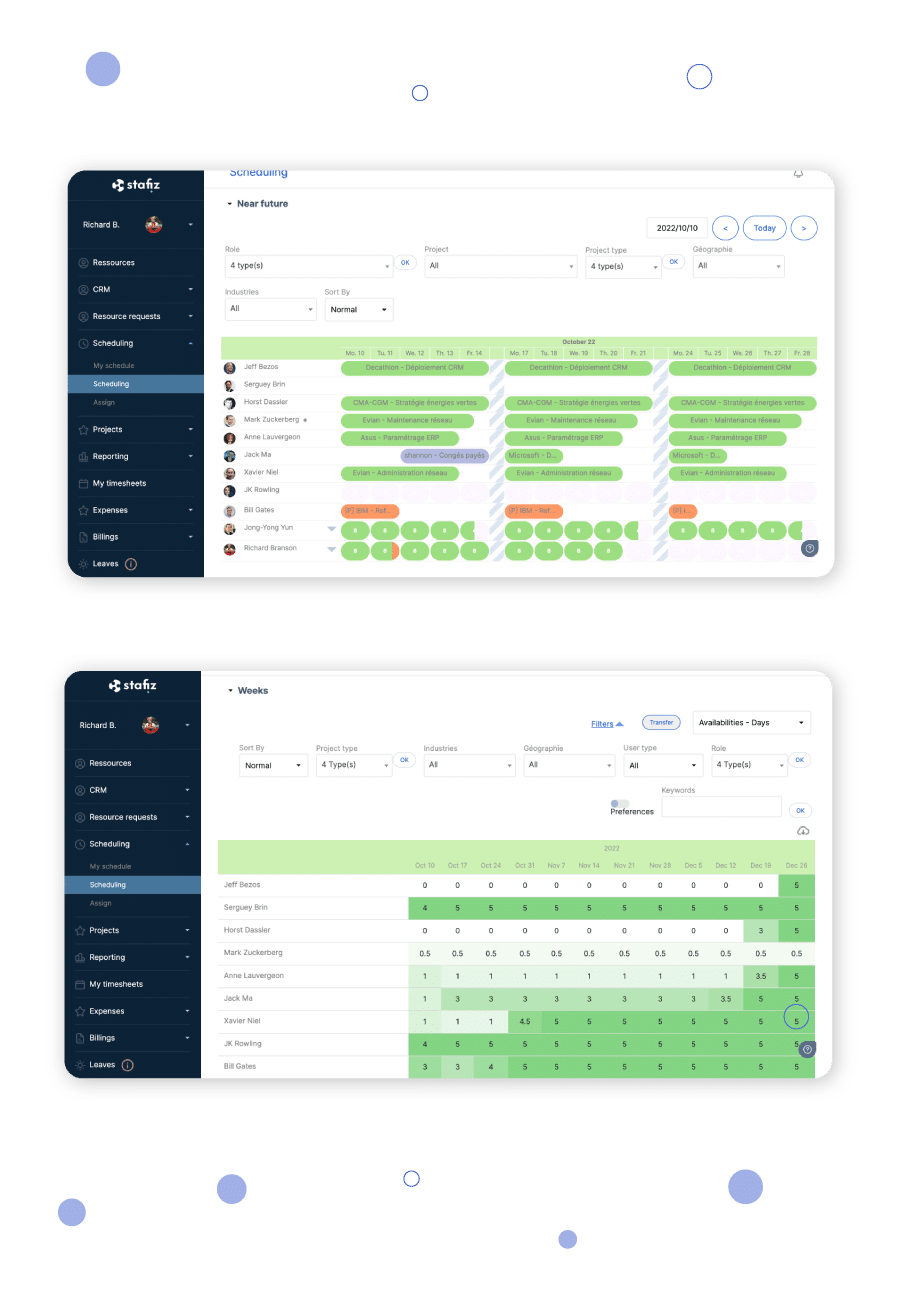
Step 6
At this point, you have a consolidated view of the load, as well as detailed information by profile (and potentially by team). Here are the key indicators that must be monitored:
Objective: to see the employee's overall occupation and to check if he or she has the ability to be staffed on client or internal projects.
The objective: to ensure that employees spend enough time on projects that generate revenue to preserve margins.
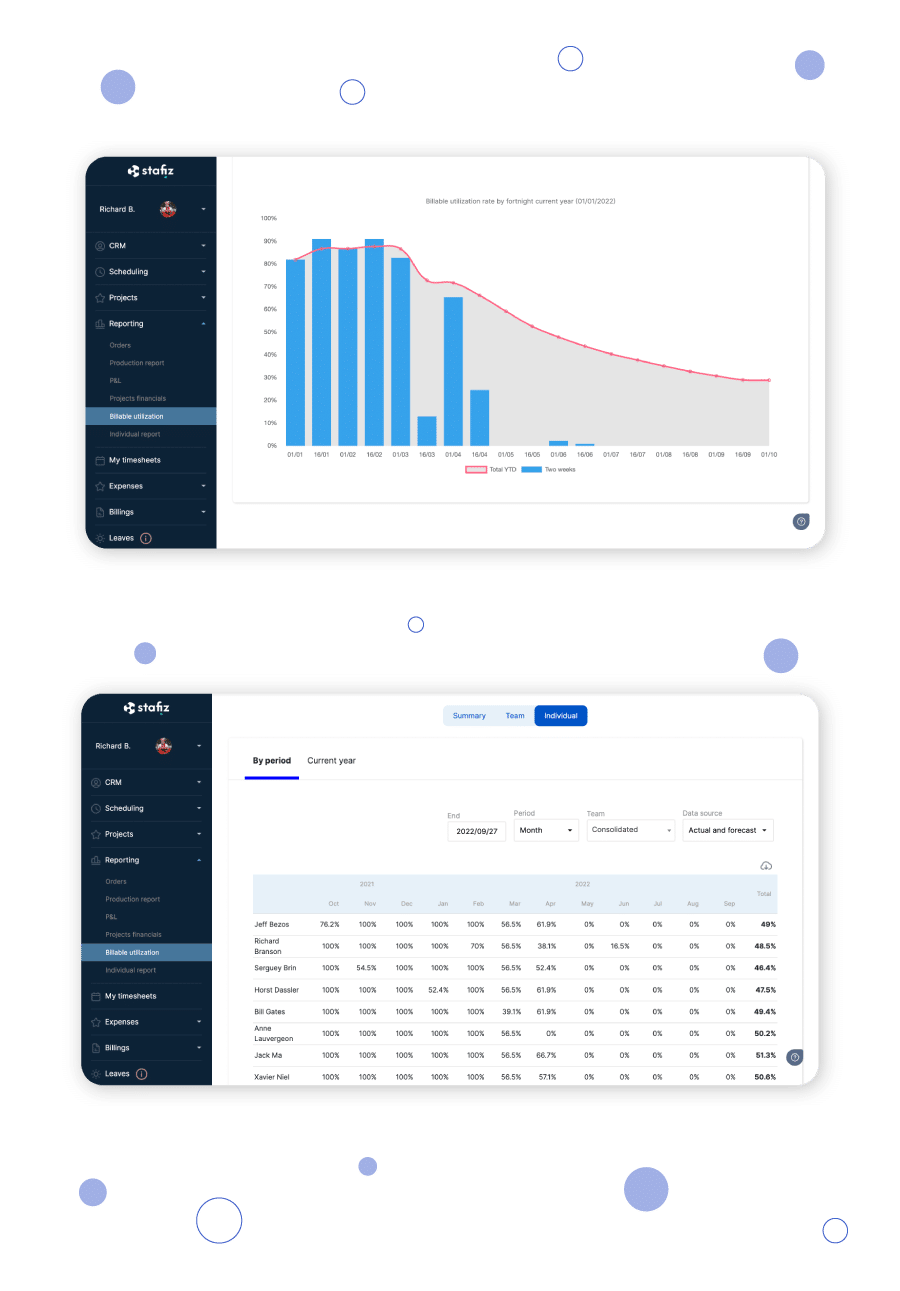
Discover all the essential steps in our guide
Steps 7 & 8
The global view you created now allows you to identify issuesand answer the following questions:
The role of the operations manager is to resolve each of these points by making the necessary trade-offs and adjusting the assignments so that the indicators are at the right level.
The implementation of a resource planning Improving performance involves coordinating change so that data is regularly updated. This update frequency is imperative to ensure that the data you rely on to make decisions is reliable and relevant.
Project managers must be trained and empowered to update the projected workload on their projects regularly. Ideally, a review of their project portfolio should be done monthly. It is also necessary to set up a resource planning meeting to facilitate arbitration.
Depending on the needs of the different teams and the customer issues, a decision taken collectively by a manager promotes performance improvement.
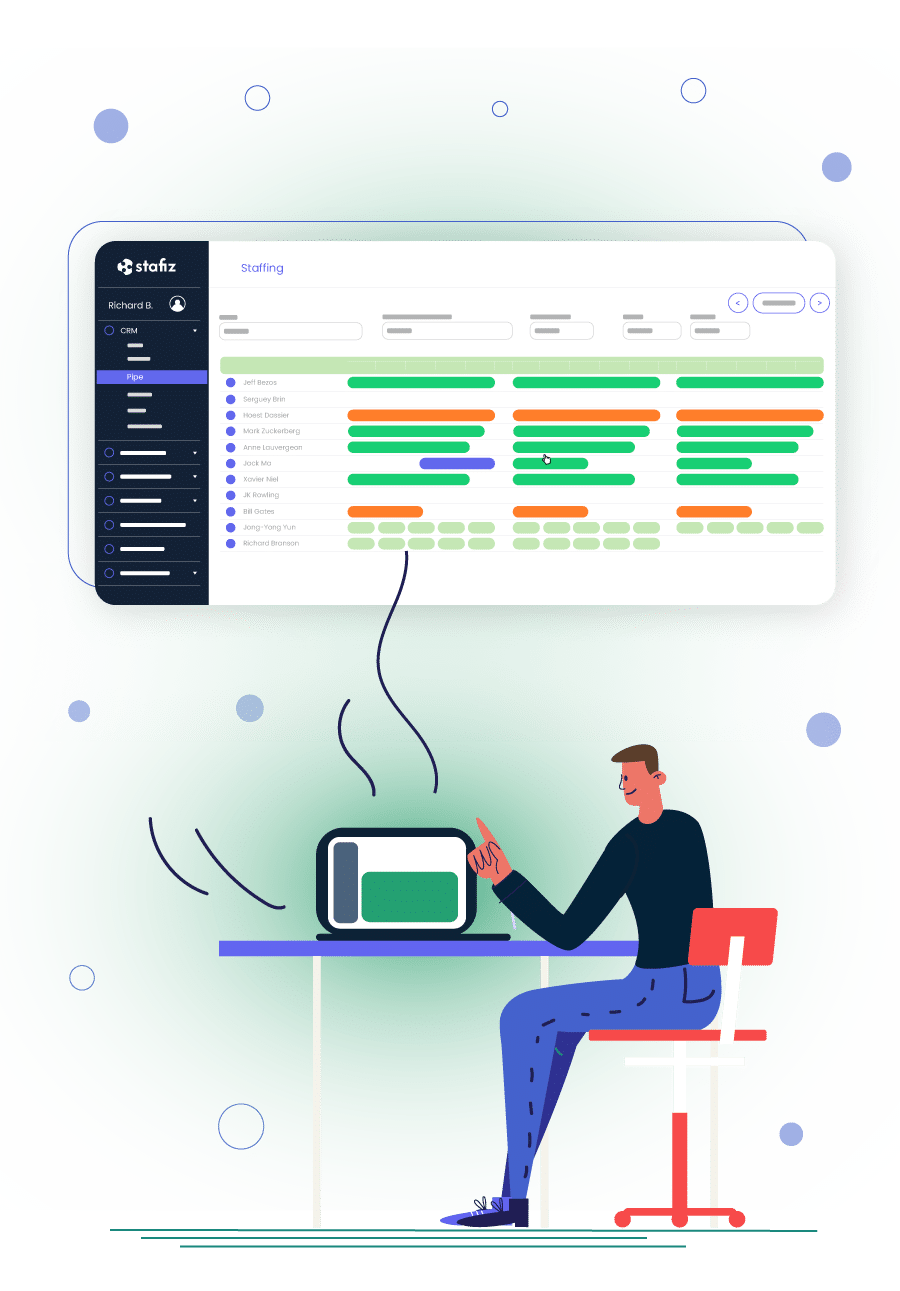
Steps 9 & 10
Now that everything is in place, it is necessary to define the objectives to be achieved on which the resource planning has a direct impact. The KPIs identified above must be reviewed by management and monthly, quarterly, and annual objectives must be set. The employee approach also makes it possible to consolidate at the level of groups of people (teams, business unit, role, etc.).
These indicators must therefore be analysed from different perspectives, and targets at each level must be set to strengthen performance.
You have the choice to work on your resource planning spreadsheets and design models or choose a tool for resource planning dedicated. As you can imagine, this is the second option we recommend. Spreadsheets create the following problems:
Are you going to opt for a resource planning ?

To learn more about the Stafiz platform, visit the product page.